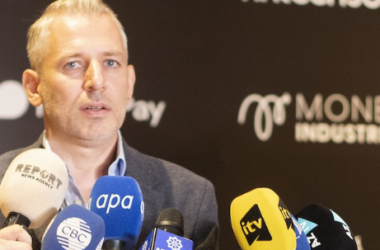We have seen a definitive shift in our approach to where we work, with 30% of the UK workforce working remotely at least once a week in 2022. Moving away from full-time office hours into a more hybrid perspective presents businesses with new questions to answer.
One of these questions is how businesses keep the formal feeling of in-person meetings with the new requirements. Could the newly emerging metaverse technology be the answer to bridging that gap?
In this article, we’ll look at how virtual reality within the metaverse could help boost the remote working experience for meetings. On top of that, with the metaverse still being developed, we’ll think about the possibilities of a virtual space for businesses and how they could change the landscape.
Metaverse making meetings more accessible
The metaverse uses virtual reality to recreate the world we live in but in a digital space. Interacting with this platform is done through VR headsets or even just mobile phones, laptops, and tablets to view the world and move around with an avatar you create to present yourself to others.
Building a platform for your business in the metaverse and being open to hosting meetings on it could bridge the gap for business meeting accessibility. No matter where you are, if you have a metaverse login and avatar, you can join a company meeting and feel like you’re there. This, in turn, would cut down on budgeting needed for travel to meetings, which could be especially helpful as we see a continuing rise in petrol prices.
Not only does this improve meeting settings for remote workers, it could also assist differently abled members of your workforce. For example, if meeting participants were hard of hearing, they could have closed captions of what was being said transcribed and displayed for them to read. Or, if you had an employee who was injured or had a physical disability which made it difficult to travel, this issue could be eliminated through the metaverse.
Meetings are becoming more visually engaging with VR
In addition to closed captioning helping to add visual aid to those who are hearing impaired, the augmented virtual reality of the metaverse could make meetings more interesting visually.
Interactive whiteboards were introduced to office spaces as early as the start of the 1990s. They’re great for displaying information to those in the room but are limited when showing anything other than flat 2D images and videos. Plus, it’s incredibly difficult if you’re dialled in from elsewhere, and the screen sharing isn’t up to standard.
Metaverse meetings could take advantage of their digital landscape to increase engagement with those involved through visuals. This could mean presenting graphs and tables in 3D, with projections becoming real-time animations to visualise things like customer analytics. Making them more visually engaging could help with creativity and lead to more ideas to follow up on outside the meeting room.
Training & developing staff
It won’t just be meetings that’ll be transformed by including the metaverse in workspaces. Training, as well as learning and development (L&D), will evolve alongside the more formal meeting environments in VR.
The engaging nature of training within an augmented digital reality could help new employees with the learning material. In fact, PwC conducted a study where employees from 12 of their locations took part in the same training in three different environments: classroom, online learning, and VR learning.
The results showed how effective VR learning was for upskilling and training. Those who took part in VR learning were four times faster than their classroom counterparts, and four times more focussed than the online learners. Afterwards, they felt 275% more confident applying the skills they mastered from the training to their work. This application of VR shows that it can have a hugely positive impact on retention as well as the application of training.
The metaverse is still very much in development, however, the theory crafting the future of its use is bright. American banking group JP Morgan estimated that the potential market value of the metaverse could be well over $1 trillion, and an Accenture survey showed that 71% of respondents believe it will have a positive impact on businesses. This genuine belief in the metaverse and its potential shows that it could revolutionise workspaces for better accessibility and training.










